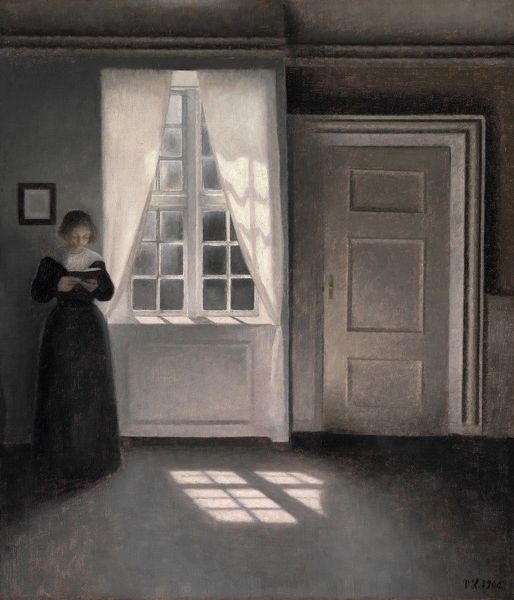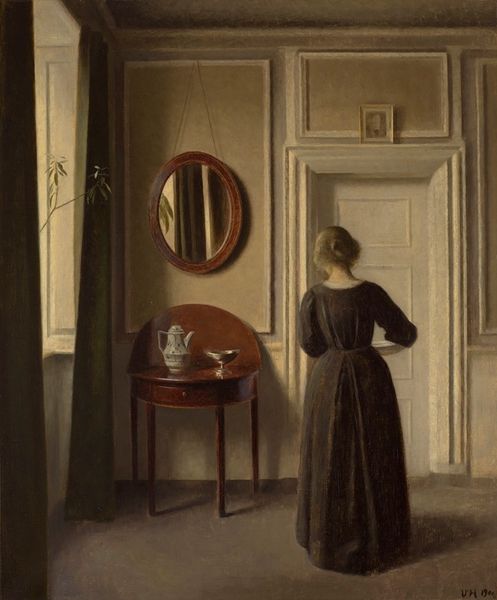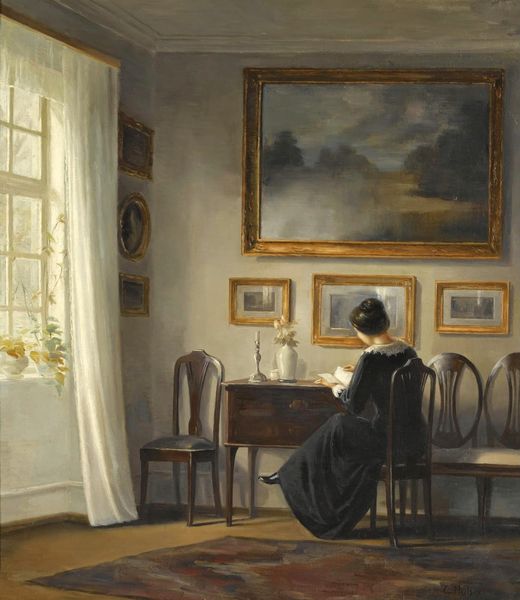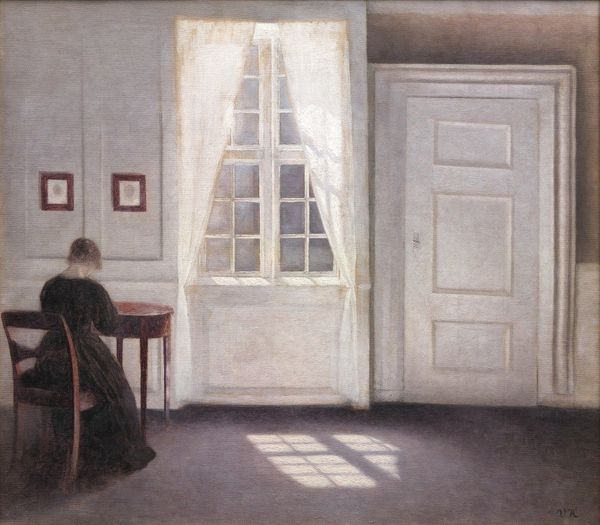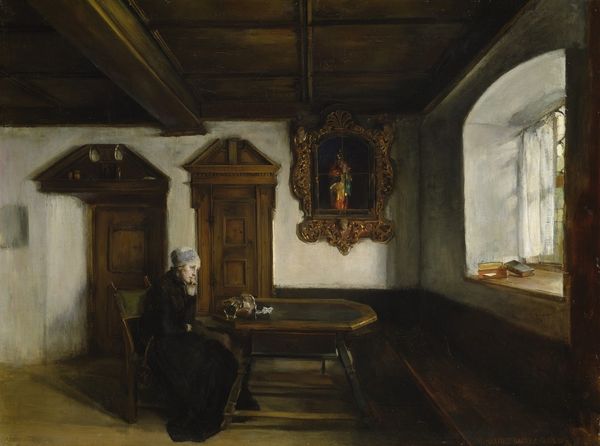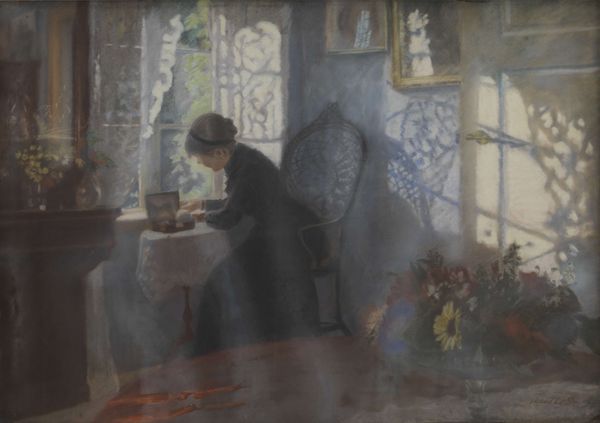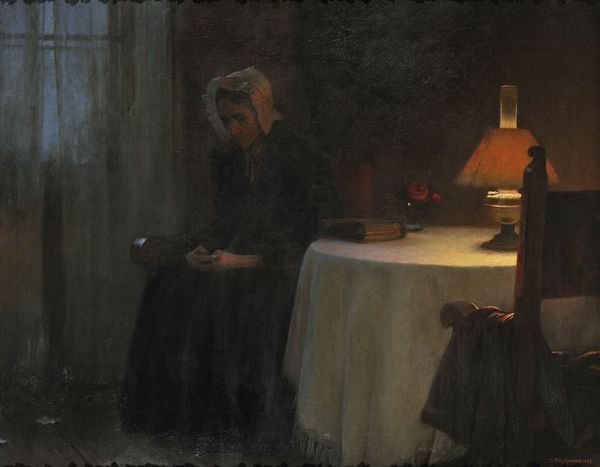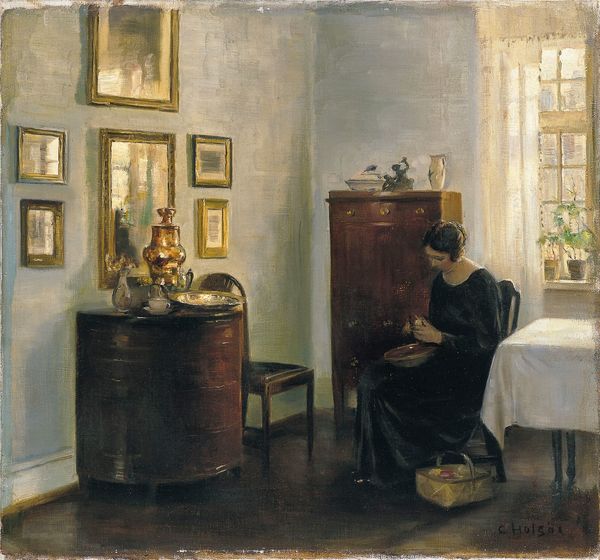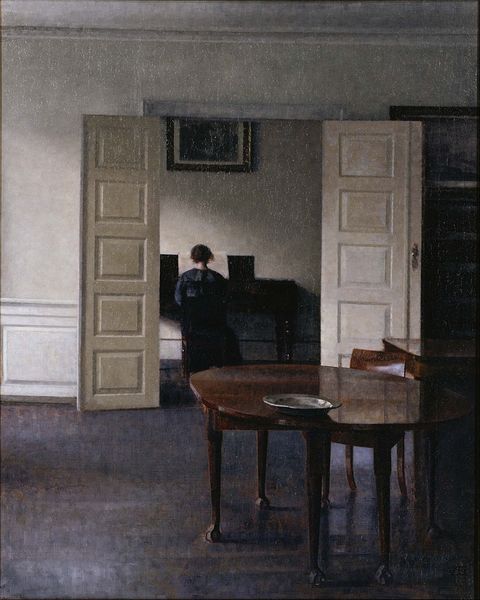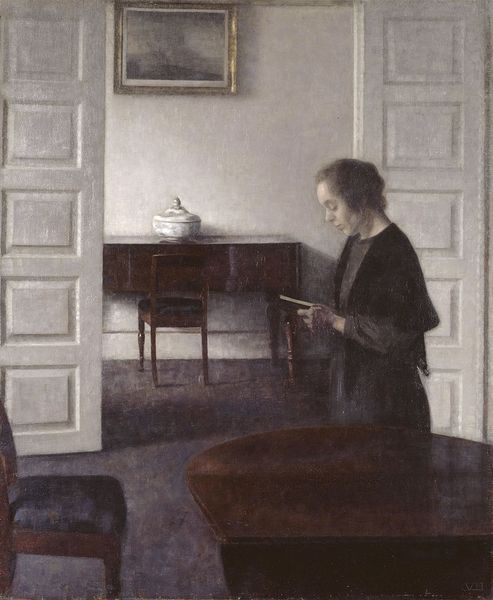
A Room in the Artist’s Home in Strandgade, Copenhagen, with the Artist’s Wife 1902
0:00
0:00
painting, oil-paint
#
portrait
#
figurative
#
painting
#
oil-paint
#
intimism
#
symbolism
#
realism
Copyright: Public Domain: Artvee
Curator: This is Vilhelm Hammershøi's 1902 oil painting, "A Room in the Artist’s Home in Strandgade, Copenhagen, with the Artist’s Wife". Editor: My initial response is a stillness, almost oppressive. The muted palette amplifies a sense of quiet melancholy; the color is barely present. Curator: The arrangement and coloring is what establishes the introspective theme often associated with the Intimist movement, but what of the broader culture producing such works? Hammershøi painted these subdued interiors during a period of significant social change in Denmark. Industrialization, urbanization, and new philosophical ideas were all reshaping Danish society, and this painting reflects the anxieties of change and isolation of modern life, in contrast with conventional portraiture's show of bourgeois success. Editor: The symbolism is stark in its restraint, an articulation of the internal through pure pictorial form. The restricted tonal range establishes an aesthetic framework within which small, almost imperceptible chromatic alterations become critical in terms of compositional balance, mirroring psychological complexities. Note also the planar geometry throughout, which enhances the feeling of austerity. Curator: The artist’s home itself also became a stage. Hammershøi almost obsessively painted and re-painted aspects of his residence. It has been argued that the repetition serves to underscore that private space being a modern refuge. The presentation in exhibitions contextualized domestic quiet as commentary on modernization in cosmopolitan circles. Editor: From my view, the figure is deliberately situated within a matrix of interlocking formal structures to heighten tensions. Look at the opposition of the red tablecloth against the pervasive grayscale, or the silhouette of the woman in profile bisecting perspectival orthogonals: this creates an aesthetic friction emblematic of human consciousness versus structured environments. Curator: Yet, he found commercial and institutional support in his time from representing his immediate surrounding. We can therefore contextualize it within both his personal experience, as well as his status in Copenhagen at that period. Editor: This work offers a glimpse into a very particular relationship between visual space, emotional experience, and its cultural moment. A powerful combination. Curator: Indeed. The painting’s seeming simplicity belies its historical and formal sophistication.
Comments
No comments
Be the first to comment and join the conversation on the ultimate creative platform.


